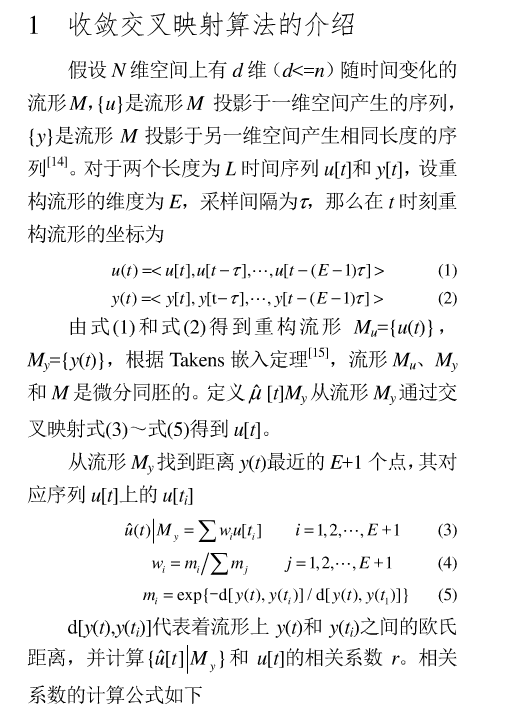From Wiki:
Convergent cross mapping (CCM) is a statistical test for a cause-and-effect relationship between two time series variables that, like the Granger causality test, seeks to resolve the problem that correlation does not imply causation.[1][2] While Granger causality is best suited for purely stochastic systems where the influences of the causal variables are separable (independent of each other), CCM is based on the theory of dynamical systems and can be applied to systems where causal variables have synergistic effects. The fundamental idea of this test was first published by Cenys et al. in 1991[3] and used in a series of statistical approaches (see for example [4], [5], [6]). It was then further elaborated in 2012 by the lab of George Sugihara of the Scripps Institution of Oceanography, La Jolla, California, US.[7] ()


5. 收敛交叉映射(convergent cross mapping)
Convergent cross mapping(CCM) is astatistical testfor acause-and-effect relationshipbetween twotime seriesvariablesthat, like theGranger causalitytest, seeks to resolve the problem thatcorrelation does not imply causation.[1][2]While Granger causality is best suited for purelystochasticsystems where the influences of the causal variables are separable (independent of each other), CCM is based on the theory ofdynamical systemsand can be applied to systems where causal variables have synergistic effects. The test was developed in 2012 by the lab ofGeorge Sugiharaof theScripps Institution of Oceanography,La Jolla, California, USA.
Granger Causality是经典方法,在计量经济学的时间序列分析中有较多的应用。 除此之外,还有Convergent cross mapping (CCM)。Granger因果模型的前提假设是事件是完全随机的,但现实情况有很多是非线性、动态且非随机的,Granger模型对这一类状况不适用。CCM则能适用于这一类场景,在多组时间序列中构建出因果网络。 感兴趣的可以读一下这篇发表在Science上的文章: